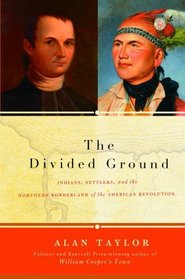Search -
The Divided Ground : Indians, Settlers, and the Northern Borderland of the American Revolution
The Divided Ground Indians Settlers and the Northern Borderland of the American Revolution
Author:
In 1761, at a boarding school in New England, a young Mohawk Indian named Joseph Brant first met Samuel Kirkland, the son of a colonial clergyman. They began a long and intense relationship that would redefine North America. For nearly fifty years, their lives intertwined, at first as close friends but later as bitter foes. Kirkland served Ameri... more »
Author:
In 1761, at a boarding school in New England, a young Mohawk Indian named Joseph Brant first met Samuel Kirkland, the son of a colonial clergyman. They began a long and intense relationship that would redefine North America. For nearly fifty years, their lives intertwined, at first as close friends but later as bitter foes. Kirkland served Ameri... more »
ISBN-13: 9780679454717
ISBN-10: 0679454713
Publication Date: 2/21/2006
Pages: 560
Rating: 2
ISBN-10: 0679454713
Publication Date: 2/21/2006
Pages: 560
Rating: 2
4.5 stars, based on 2 ratings
Publisher: Knopf
Book Type: Hardcover
Other Versions: Paperback
Members Wishing: 0
Reviews: Amazon | Write a Review
Book Type: Hardcover
Other Versions: Paperback
Members Wishing: 0
Reviews: Amazon | Write a Review
Genres:
- History >> Americas >> Native American >> General & Post-Columbus
- History >> Americas >> Native American >> Northeast
- History >> Americas >> United States >> 19th Century >> General
- History >> Americas >> United States >> Revolution & Founding >> General




